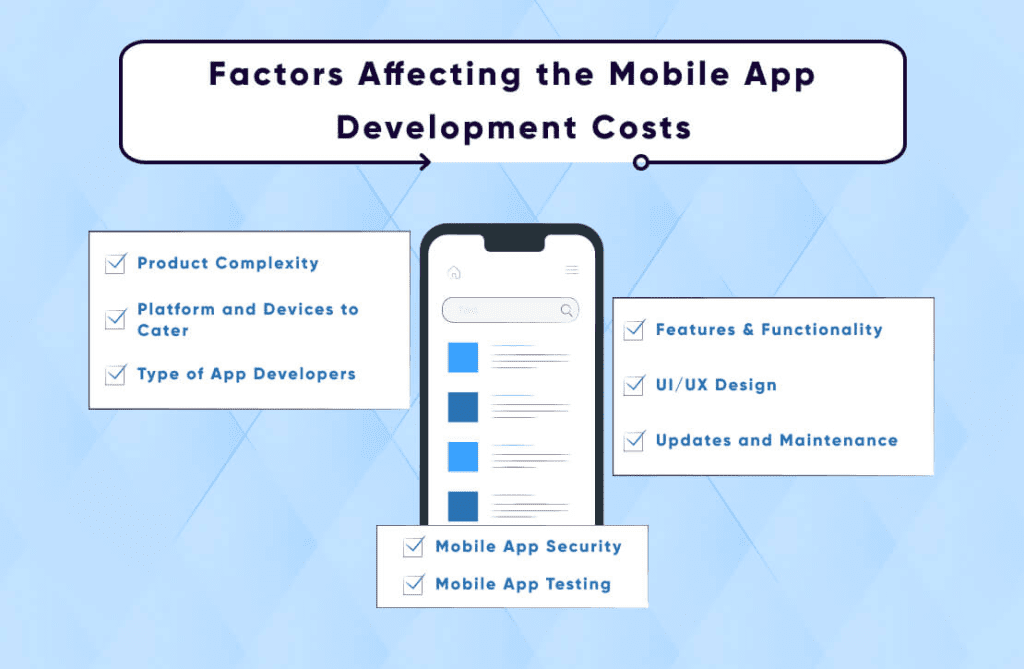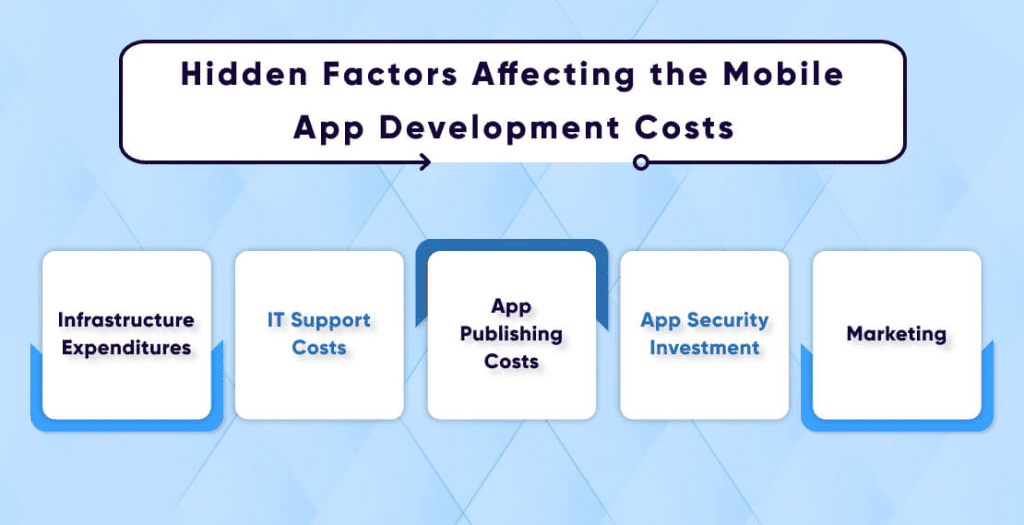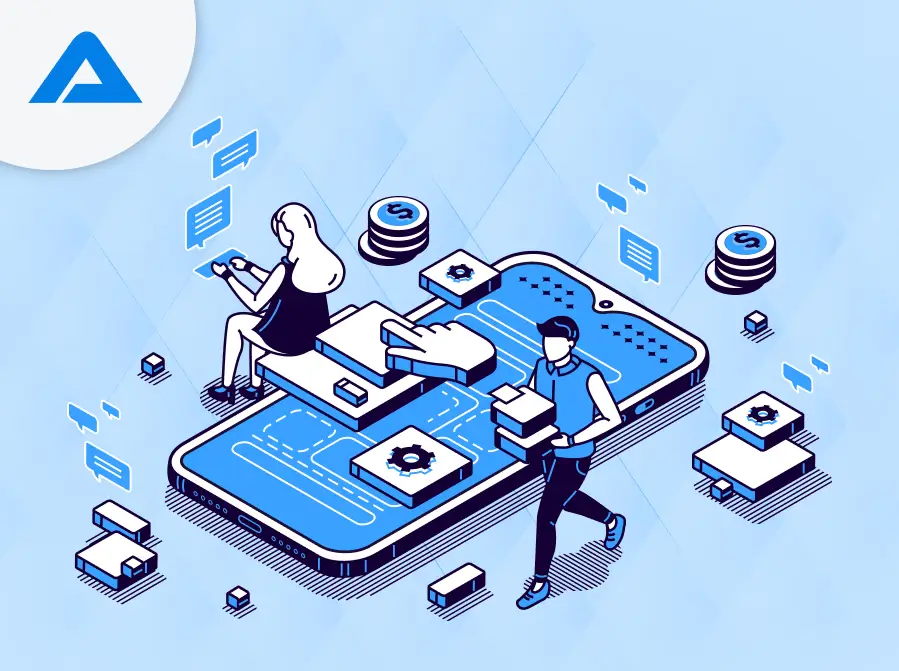Today’s mobile device revolution has caused almost every business to branch into mobile operations, prompting entrepreneurs to develop mobile applications for their companies. When first exploring the development costs of an app, they may wonder, “Isn’t an app just an app? If not, how much would it cost?” They could answer themselves this way depending on requirements: it may cost as little or a lot depending on the complexity required and budget considerations.
Estimating the mobile app development cost is often one of the first and foremost components of any budget smartphone app design project. Business owners frequently ask themselves two key questions when undertaking such endeavors – what will it cost me to develop apps via outsourcing services versus creating them themselves?
Each option offers its own set of advantages and drawbacks; let’s examine them all to understand their impact on app development costs.
App development companies that have been around for some time are equipped to effectively handle multiple mobile app development projects efficiently. App projects often involve intricate technology solutions like Machine Learning to power sophisticated augmented reality computation, Blockchain, IoT, or others – something most app development firms lack the capacity for.
How Much Does Mobile App Development Costs?
Developing an app costs between $10,000 to over $300,000. If you are a consumer, the first thing you should be aware of regarding estimates for mobile app development costs is that the price depends on a wide range of variables.
Let’s split the costs of developing apps into three according to the budget:
- Basic App costs vary from $10000 to $30000.
- Complex Moderate Apps cost between $30000 to $300000
- Highly complex Apps cost upwards of $300000
Similar to the platform, the development of apps can also be a significant factor in determining the cost of app development.
To get the most accurate cost estimates, businesses need to be clear on the requirements and communicate this to the top mobile app development firm to work with. The top companies have all the tools and minds to evaluate costs according to their needs.
Employing dedicated app developers can help businesses create superlative minimal viable products (MVPs), which will assist in assessing the needs of their target market. The cost of MVP development can range between $10,000 and $50,000.
Factors Affecting the Mobile App Development Costs

After understanding the estimated price of creating mobile apps, it’s time to look into the crucial elements that play a significant part in determining the cost.
Product Complexity
The number of functionalities measures the complexity of mobile applications, features components, interactions, and features in the software’s codebase.
It is also possible to define complexity as the degree of difficulty that a programmer has to overcome when making a mobile application.
A typical FinTech mobile app is more complicated than a simple task list app because of the variety of functions and features that it comes with.
However, the fact that the mobile application is designed for a specific purpose doesn’t necessarily mean it’s complicated. Some are more complicated than the majority of multi-purpose apps. Examples include:
- Instagram: Although it is a uni-purpose photo and video-based social media platform, its backend is highly complex algorithms that monitor the number of metrics used to decide which advertisements and images to show users.
- Spotify: It is a one-purpose platform that has very complex functionality. One example is its sophisticated transmission protocol, which provides offline streaming music mode.
As you may have thought, the more complicated an idea is, the longer it is required to develop it fully. This, in turn, influences the costs. To ensure that we understand the concept clearly understanding, we’ll break cost into three kinds:
- Basic app – $15,000 to $25,000
- Average app – $30,000 to $50,000
- Complex app starts at $700,000
Platform and Devices to Cater
The price of developing mobile apps depends on the number of devices and platforms. The price of developing an app only for one platform is comparatively lower than in the scenario where your users are spread out across iOS and Android platforms.
- iOS apps
The iOS applications are designed with Apple devices at the forefront of our minds. iOS mobile apps work on various iOS devices, such as iPhones, iPads, iPod touch, etc. Thus, since the business enterprise is catering to a particular group of people and users, the costs for iOS apps will differ from other OS platforms.
- Android apps
Android apps are developed to work on tablets and smartphones, as well as Android TVs based on Android. In this case, the price associated with Android app development depends on various aspects and the variety of gadgets with different-sized screens that the app has to be able to work on.
- Cross-platform mobile apps
Mobile apps running seamlessly across Android and iOS operating systems are cross-platform applications. The use of cross-platform application development frameworks is growing as it aids in expanding their operations and is economical. React Native and Flutter are the two most popular platforms used to create cross-platform applications.
Type of App Developers
The cost of developing an app also depends on the type of app creators employed to outsource the app development. The various kinds that companies develop mobile apps are:
- Freelance Developers
Some freelance designers or app developers can create imaginative solutions for apps. However, they may need the right skills for in-depth knowledge and experience controlling the entire project.
Therefore, freelancers could face difficulties if there is a complicated situation in the development of an app. At the same time, the budget for app development via freelancers is the smallest.
- Outsourcing App Development Company
Remote service providers assist the business throughout the process of developing apps. These are the most reputable mobile application development company that have a team of committed designers and developers.
One must know and comprehend the best time to engage remote developers to meet the requirements of their app development project. Because of their experience and expertise, outsourcing services for app development companies deliver better outcomes than freelancers.
Features & Functionality
Finding the right solution to “How much will it cost to develop an app? It is only possible by knowing the features you plan to provide your customers. These are the biggest costs since they could take a long time to implement.
The cost to create an app may fluctuate in any direction based on the quantity and extent of features you intend to incorporate. Certain features, such as push notifications, could take up a significant portion of your budget and cost hundreds of thousands of dollars during implementation.
Let’s find out what it costs to create an application. Based on the features you’re planning to add.
- Hardware Features
They are also known as native device features since they are based on devices’ hardware. Modern smartphones have many built-in features such as internet connectivity, NFC, Bluetooth, etc. The development of these features could take a significant amount of time and can range from just 30 to 100 hours of app development.
- User Login
This is perhaps the most essential feature in most modern applications. Depending on the logic and level of complexity, such as the ability to recall a password, installing these features can take between 10 and 70 hours.
- User Engagement
The functions of this kind include social media sharing, SMS push notifications, email, and so on—all of the things that help to interact with your users. Certain features can be implemented using APIs, whereas others require to be designed completely from scratch.
Based on your needs, setting up this functionality could range from 25 to 145 hours.
- Geolocation
The features of this kind are very popular with apps, such as food delivery apps and maps. They can be built using GPS and iBeacons and will require anywhere from 10-150 hours in development.
- Payments
Numerous accessible payment gateways can be integrated into your app to allow in-app payments, such as Apple Pay, Google Pay, Stripe, PayPal, credit cards, Payoneer, etc. Based on the level of complexity and the degree of customization the app requires, you could invest 20 to 200 hours to implement this functionality.
- Cross-Device Synchronization
If you develop an app compatible with iPhone and iPad, adding an option that allows users to transfer data between various devices could be appropriate. The development process will last between 20-200 hours.
- Data Encryption
Data encryption is an essential requirement in many countries. If you don’t wish to face issues with GDPR or other regulations, consider including this feature in your application. The process could take anywhere from 10 to 80 hours, depending on the protocols, the level of security, and personal preferences.
UI/UX Design
Moving to how much it takes to develop an app, we’ve reached the design stage of an app.
Designing an app is an integral element of the development phase.
The two cannot be separated to determine the price of creating the application.
Designing is comparable to developing, and adding features increases costs proportionally.
The same applies to design. Should you choose to design using the templates, your cost estimate may be a bit limiting, and more modifications to the design can result in more expenses and a longer time.
There are a few points we must consider here, too.
- User Experience
UX is all about how the application operates. UX involves the creation of screens using paper or on a design platform.
Ultimately, it helps determine the cost of creating a mobile application.
The aim is to make the program simple to use for the user.
Making that experience and understanding the market, the customer, your objectives, and your goals is vital.
The cost of launching a mobile application will vary based on the level of engagement and the intricate design.
- User Interface and Visuals
There are numerous ways to improve the application design. But it all starts by defining the UI or how the app will appear to the user.
You can calculate the cost based on the usage of various visual elements. In reality, it can affect the price of MVP design, too.
Designing an application is followed by creating mock-ups, which allow a visual representation of the design.
In this case, too, the design will be based on your objectives.
What are the requirements you have for your enterprise application?
- Engagement
- Sales
- Information
Additionally, the type of app you’re creating will play an important role in the development cost of your app.
- Basic app
- Authentication
- Social networks
- On-demand
- E-commerce
- Marketplace
- IoTV
Different kinds of applications require different designs.
At AddWeb Solution, we put the same focus on both design and development to determine the best cost to create and develop an application. Examples:
- Layout,
- Screen,
- Colors,
- Typography,
- Shapes,
- Elements,
- Items.
Updates and Maintenance
The mobile application will require periodic updates and maintenance to the genre’s needs and customer reviews. Additionally, the increasing use of modern technology makes it simpler for companies to improve their overall process and redesign their mobile apps to meet the evolving requirements of business.
Additionally, modern enterprise-level apps and web application development solutions must maintain APIs regularly, which helps in enhancing users’ overall experience. Due to the frequent changes, the custom application budget for development will fluctuate as regular maintenance and monitoring are constant.
Mobile App Security
In terms of app security, an element in Mobile pricing for app development services, high-level security will cost more. The app’s long-term viability must keep the data collected from users secure.
Therefore, companies should take steps to secure the protection of their data since it could be a decision-making point in the end. Security for mobile apps can increase the cost of developing mobile apps; however, it provides real-time security, ultimately saving much cash.
Mobile App Testing
To ensure that the mobile app provides an enjoyable experience for the user, it’s essential to test the app appropriately. Thus, testing the app is key in estimating iPhone and Android app development costs. Whether it’s speed, user-friendliness, or app connectivity, mobile app testing plays an important role.
Testing apps is an integral part of the app development process, but in specific hiring models, the mobile app testing process can be selected as an additional expense.
In this case, for example, under the dedicated hiring model for developers in the dedicated developer hiring model, only the cost for the mobile developers is covered, and the cost is based on the resources employed. In this scenario, the company must pay additional fees for mobile app testing or find an additional resource to test apps.
Hidden Factors Affecting the Mobile App Development Costs

Apart from design and development, many factors directly impact the cost of developing apps, yet they aren’t considered particularly if you’re getting quotes from a less experienced team. Ensure that your quote for the app development includes these crucial elements.
Infrastructure Expenditures
The infrastructure decisions made by mobile applications can greatly impact the total costs of their development. A key element will be the selection of hosting services and servers. Cloud-based services such as AWS, Azure, or Google Cloud provide scalability but could come with ongoing costs. On the other hand, self-hosting requires a significant initial investment, but it also offers greater control. Additionally, the complicated backend architecture plays a crucial function. It comprises APIs and databases along with server settings. Applications that have higher processing requirements will require more development cost.
When making these choices and such decisions, it is important to balance cost control and scalability and consider the backend’s complexity.
IT Support Costs
The support of mobile apps throughout its entire lifecycle significantly impacts the total development cost. For instance, mobile applications require constant monitoring to ensure they function properly. This includes bug fixing or enhancements to features, as well as updating to the latest operating system (OS) version. Additionally, it provides adequate customer support, including solving user problems and considering their suggestions. Keep in mind the security of mobile apps; regular updates and patches for security are required to protect users’ data and maintain the app’s integrity. Setting aside a sufficient budget for security measures is an investment.
App Publishing Costs
Google Play requires developers to pay a single $25 fee to register. Contrarily, Apple charges an annual developer fee of $99 due annually by those who wish to have their app listed through Apple’s Apple Store. These initial costs are common usage within the app development industry. Google Play’s one-time cost is affordable for businesses that don’t need frequent updates or support. In contrast, Apple’s annual cost includes more services and benefits, which include access to Apple’s tools for development.
App Security Investment
Security is a must in developing messengers, mCommerce banking apps, enterprise mobile applications, or any other apps that require the storage and exchange of sensitive data from users. Implementing robust, secure security measures is vital when considering the cost of developing mobile apps. Security measures protect sensitive information such as customer credentials, employee credentials, and payment information. Security measures could include multi-factor authentication and cryptographic techniques, resulting in security model and data validation development expenses.
Inadequate security could result in massive financial losses, and data breach costs range from $4.54 million to an average of $4.54 million. Security testing for mobile apps and penetration testing can be costly, with the cost of a single test ranging from around $20,000-$30,000.
Marketing
When it comes to mobile app development, marketing is an unnoticed but crucial element that greatly influences the final price of the app. A successful promotion of the app is crucial to the app’s success within a competitive market. Advertising, marketing research engagement with users, and constant promotion are essential components of a comprehensive marketing plan; each carries specific costs.
Preparing these costs ahead is essential, considering that the market for mobile apps is flooded with numerous products. Even if an app comes with new functions and features, its performance depends on users’ recognition and understanding. Mobile marketing boosts brand awareness, contributing to an increase of 60% in smartphone users who interact with brands. If marketing costs aren’t considered, a new product might not be noticed and may even outnumber rivals by running active marketing campaigns.
The Key Takeaway
From the complexity of your app to the platform you’ll be deploying it, we’ve completed the entire process by analyzing factors that influence mobile app development costs. Each of these factors is important and must be considered to evaluate your business possibilities correctly and determine the best ways to allocate resources intelligently. This article should give you an idea of what you can expect when developing your product and how to calculate your potential investment property.
Calculating the costs of developing apps is a skill that can be improved by the passage of time and experience. The top app developers are experts at this, but it is difficult to develop an average cost of app development estimation similar to the price range provided. Business owners must clearly define all their requirements and have a concept of the features and functions they wish to incorporate.
